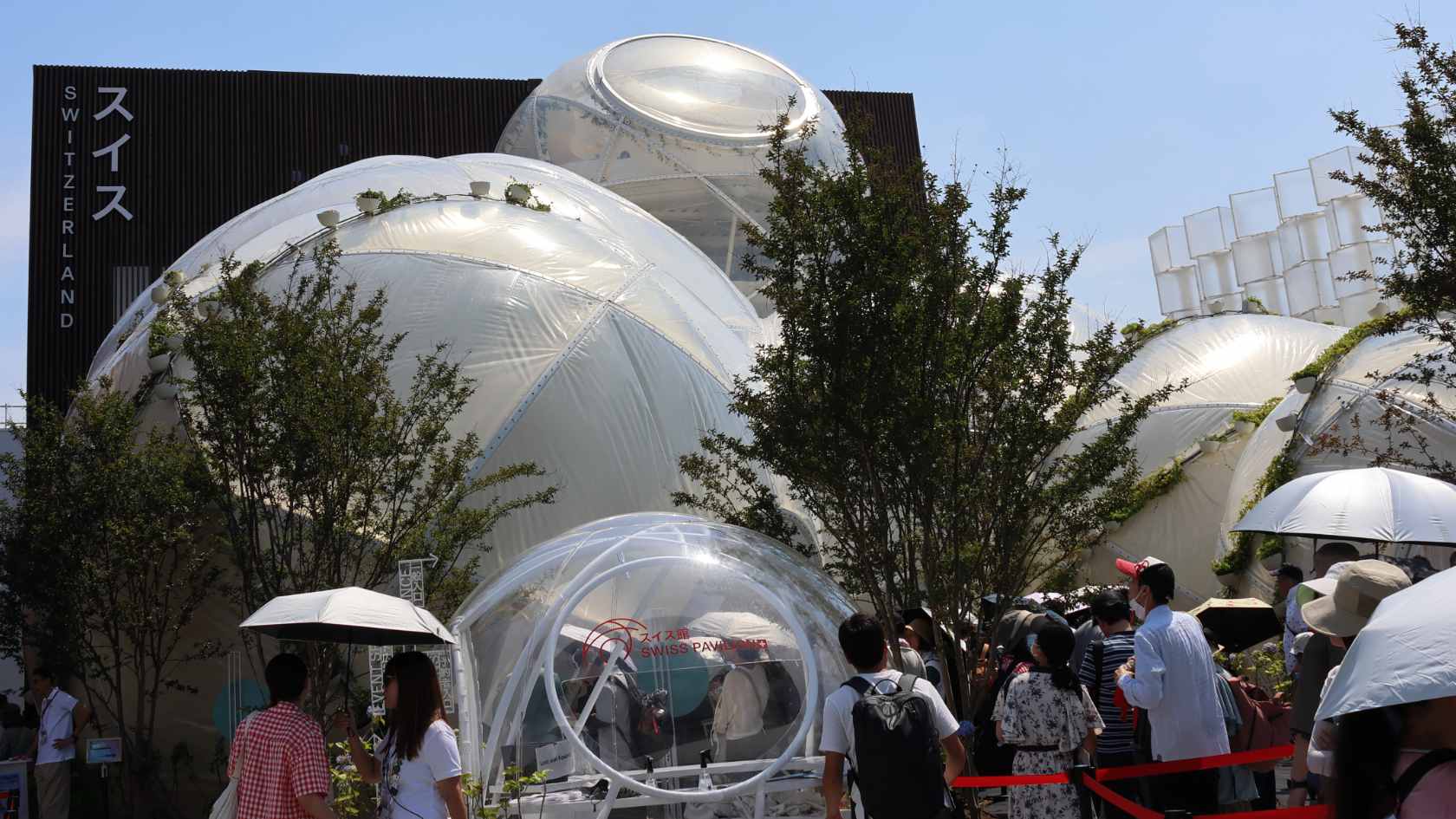Biomedicine Inspires at Osaka Expo

UZH’s Institute for Regenerative Medicine (IREM) is currently presenting its research at the World Expo in Osaka. On 20 and 21 June, IREM hosted two science cafés at the Swiss Pavilion together with its Japanese cooperation partner, the Center for iPS Cell Research and Application (CiRA) at Kyoto University, as well as Wyss Zurich and the CiRA Foundation. The events focused on Creating a Healthier You with iPS Cells and Next-Gen Medicine and featured short talks and discussions in which researchers presented the latest possibilities for treating diseases and damaged organs using regenerative medicine.
How did you manage to communicate such complex topics to a broad audience?
Melanie Generali: The audience consisted mostly of non-specialists, so we relied heavily on analogies. For example, in what’s called bioprinting, there’s a technique where tiny tissue spheres are stacked onto a needle, which a professor compared to a kebab skewer. I also used a lot of visuals and videos, and tried to explain the basics step by step. We didn’t focus on the very latest findings – our audience wasn’t interested in learning about the latest markers, for example. What matters to them is the overall picture. We also used handheld microscopes that let visitors look at cells, an iPad app and a children’s card game.
What was the main thing you wanted to convey to the audience?
Generali: The coronavirus pandemic really drove home for me how important it is for people to understand what we do in research. I wanted to offer insights into where we currently stand in the field of regenerative medicine, what progress has been made and where further research is still needed.
How did the audience respond?
Generali: We sensed a lot of enthusiasm, which was really nice. After breaking the ice with a first question, there were also many good and justified questions from the audience.
How did you communicate with the audience?
Generali: We had an interpreter on site who people could listen to through an earpiece. This was an important investment, as we wanted the audience to truly benefit from the talks and not be held back by a language barrier.
Were there other contacts besides the talks?
Generali: Yes, we got to visit the Nakanoshima Qross, where researchers, clinicians, industry partners and Japan’s Pharmaceuticals and Medical Devices Agency work together under one roof – in an impressive new building. Our partners from CiRA in Kyoto established the CiRA Foundation there, which focuses on clinical cell production at the new site. We also organized a networking event in cooperation with Swissnex and invited researchers, medical professionals and industry partners. It was a great opportunity to engage with others outside of the packed official schedule.
What does the collaboration with CiRA mean to you?
Generali: It’s very special, also on a personal level. I started as a postdoc with a six-week internship in the lab of Nobel Prize winner Shinya Yamanaka, and I was incredibly proud to be allowed to culture his cells. Now we’re taking part in the Expo together as equals. That’s a huge step. Our PhD students and postdocs can benefit directly from this. Thanks to our collaboration, they don’t have to follow the same long path I did but can get started from a different point.
How well does the intercultural collaboration work?
Generali: Of course, there are differences – for example, in communication styles or decision-making processes. But there’s a great deal of mutual respect and a shared scientific ethos that connects us. I realized early on how important it is to keep in regular touch with our collaboration partners – even if you’re not on site in person. I kept initiating meetings, and over time we established a stable rhythm. And yet, whenever I’m there in person, I can feel just how important face-to-face interactions are when it comes to sparking new ideas.
What impressions did you bring back from Japan?
Generali: Very positive ones. It was taxing, but also incredibly inspiring. I really enjoy outreach activities that bring together science, technology and society. The Expo is a fantastic platform for that.













